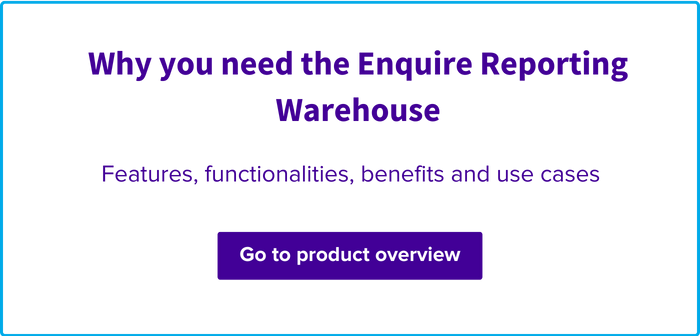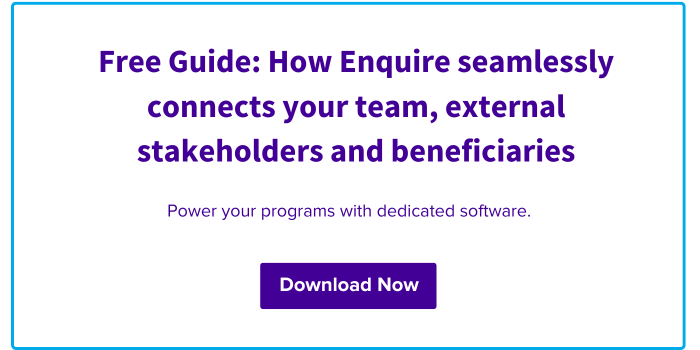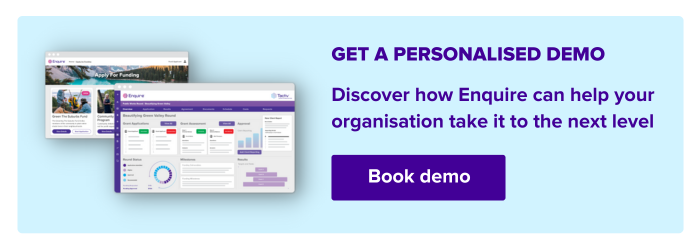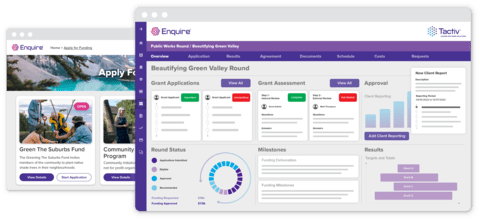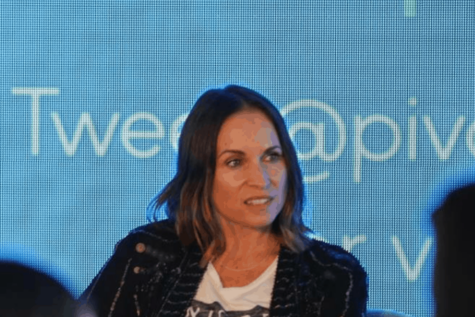At Tactiv, we’re seeing three clear grant management trends for the remainder of 2025, which are reshaping how leading organisations manage their grant programs. Here’s what you should be watching – and how your team can stay ahead.
1. Data-Driven Impact Measurement and Reporting
The first of the grant management trends for 2025 is impact measurement and reporting. Proving impact is no longer a post-program task – it’s embedded throughout the grant lifecycle. Funders and stakeholders are demanding clear, real-time evidence of performance and value. As a result, grantmakers are prioritising systems that support continuous insight, rather than static end-of-cycle reports.
From tracking beneficiary outcomes to monitoring grant compliance, data is becoming a cornerstone of strategic decision-making.
In both Australia and New Zealand, we see that public and philanthropic funders are aligning with more structured impact frameworks, including:
- Results-Based Accountability (RBA): This model helps organisations define clear end outcomes, select relevant indicators. Additionally, it helps regularly track progress to ensure accountability to funders and communities alike (MSD NZ).
- Social Return on Investment (SROI): SROI frameworks assign monetary values to social outcomes. This enables organisations to quantify the social and community benefits delivered for every dollar spent.
- Commonwealth Grants Rules and Principles 2024 (CGRPs): The Australian Government grants framework promotes transparency, accountability and flexibility in grants administration to achieve government policy outcomes and ensure equitable access of grants to and for the benefit of the Australian public.
How to Respond: Adopt an Impact Measurement and Reporting Tool
Tooling to measure and report on impact embedded in your grant management system is the most beneficial way to meet increasing reporting requirements. It directly pulls data from your grant programs to provide you with information and insights to act on. Enquire’s Reporting Warehouse allows program managers to access and analyse live program data across multiple funding rounds, outcomes, and stakeholders. Custom dashboards support internal review and public reporting – helping grantmakers demonstrate value with transparency and confidence.
2. Increased Emphasis on Equity and Inclusive Grantmaking
Equity-focused grantmaking is gaining momentum, and in 2025, it’s more than just a policy checkbox — it’s reshaping how funding is designed, delivered, and assessed. There’s increasing awareness that universal approaches can inadvertently exclude communities most in need of support.
This shift is pushing organisations to rethink:
- Eligibility criteria: Funders are being more intentional about defining who qualifies. For example, some programs setting aside streams for specific demographic groups or under-served sectors.
- Application accessibility: User experience is now front and centre, with online forms adapted for different languages, literacy levels, and devices. This is especially important for rural and mobile-first applicants.
- Co-design and representation: Program managers are involving First Nations, CALD, and other community representatives in shaping funding priorities and evaluation methods to ensure cultural relevance and ownership.
In practice, we see this in different ways. In Australia, there is the National Indigenous Australians Agency (NIAA). This agency encourages First Nations-led funding design and delivery, recognising the importance of culturally grounded approaches. Co-design with specific groups also happens in New Zealand. A growing number of programs in New Zealand are integrating shared governance models with Māori-led organisations. Additionally, regional accessibility becomes more and more of a focus. Connectivity challenges in remote areas are driving a move toward more inclusive, mobile-friendly application tools.
How to Respond: Implement Tailor-Made and Targeted Funding Programs
To ensure equity and inclusivity in your grant programs, it’s key to keep in mind who your audience is. The way you design and configure your program has a significant impact on whether the funding reaches the right audience. Therefore, it’s important to adopt a grant system that supports the ability to tailor programs to specific needs in terms of language, accessibility, ease-of-use during the application process and communication methods.
A system like Enquire provides multi-language functionality, configurable application portals, and the ability to target specific applicant types with conditional logic. These features support inclusive design and reduce friction for diverse applicants — while giving program managers the flexibility to adapt over time.
➔ Explore Enquire’s free product tours to discover the easy configurability of the software to meet specific user requirements.
Additionally, there are types of funding programs more applicable to specific groups. Voucher programs, for example, offer an effective way to provide funding to specific groups for a specific purpose. These programs are becoming an increasingly popular way for governments, businesses, and organisations to provide targeted financial assistance. Unlike cash-based financial aid or grants, vouchers are restricted to a designated purpose, ensuring that the funds are spent according to the program’s objectives. They are commonly used in areas like education, healthcare, childcare, and community sports.
➔ Read more about the value of implementing vouchers programs here.
3. Collaborations & Cross-Sector Partnerships
More and more, funders are recognising that complex challenges – such as housing, health equity, and climate resilience – require collaborative, cross-sector solutions. This is leading to a shift from isolated grants to coordinated investment models involving multiple partners.
These partnerships often require:
- Shared outcomes frameworks: Instead of each organisation working toward siloed KPIs, partners agree on joint measures of success and co-develop how they’ll track progress.
- Joint governance and decision-making: Cross-sector funding arrangements often involve steering committees or consortia that bring together public, private, and community voices.
- Secure data sharing: Systems must allow for real-time collaboration across organisations while maintaining compliance with data privacy and cybersecurity standards.
We see these collaborative funding initiatives around us everywhere. There’s the community development programs. These joint funding and delivery models – often involving local councils, NGOs, and Indigenous bodies – are increasingly common in both Australia and New Zealand. In Asia AVPN is a leading organisation working together with many funding partners worldwide to move capital towards impact. And in New Zealand the Ministry of Business, Innovation & Employment (MBIE) has increasingly moved toward co-investment models that encourage public-private collaboration on innovation and regional growth.
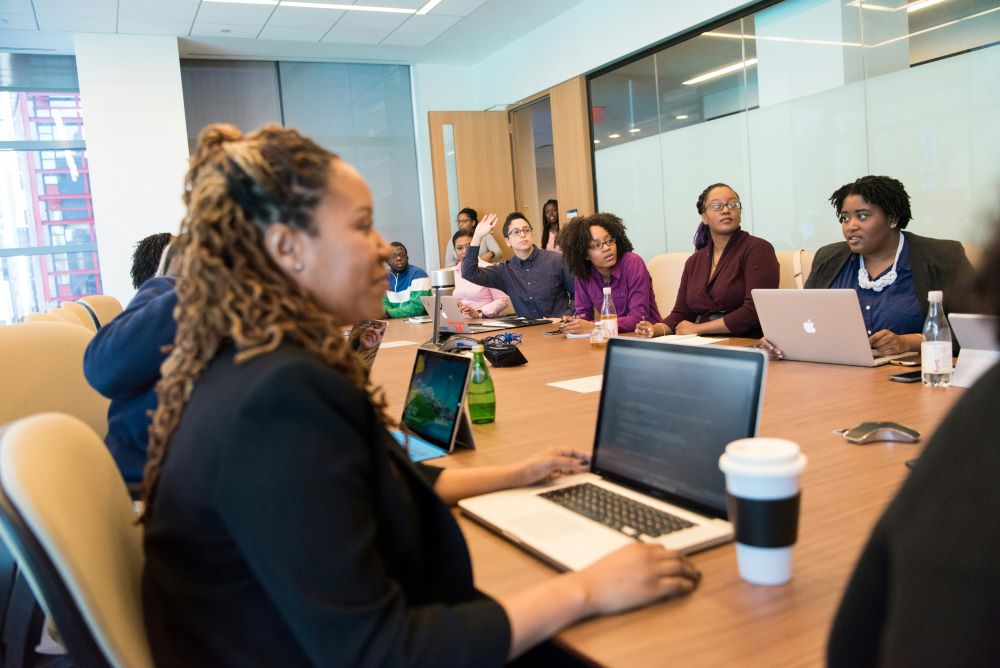

How to Respond: Work Together with Partners using a Collaborative, Cloud-Based Tool
By strategically partnering with other organisations to mutually expand reach, increase funding or combine expertise, you are able to better serve the needs of the groups you support. To facilitate this, the right tooling is key. The ability to access information from anywhere, at anytime and in a secure way is critical, as well as workflows and communication channels. Enquire offers secure role-based access for external stakeholders – such as assessors, delivery partners, and governance groups – allowing everyone to collaborate in a unified platform. Activity logs, data permissions, and version control ensure accountability while enabling flexibility.
Looking Ahead: Lead with Insight, Inclusivity, and Innovation
The future of grant management in 2025 is clear: success will depend on your ability to measure what matters, include who matters, and work together across sectors. These trends in grant management for the second half of 2025 are dynamic – trends might emerge and based on the industry there are smaller developments as well.
At Tactiv, we’re proud to support forward-thinking grantmakers with Enquire – a configurable, cloud-based platform purpose-built for the complex needs of modern grant programs.
Whether you’re focused on social impact, inclusion, or multi-stakeholder coordination, we’re here to help you simplify the complex – and deliver more value through every dollar you invest.
Interested in seeing how Enquire can support your goals?
Contact us for a tailored demo or chat with our local team.


